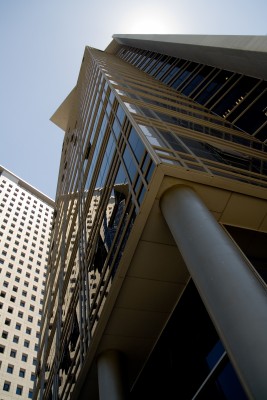
Tall buildings are exposed to all the normal security risks however, the physical nature of tall buildings calls for different security emphases. In major metropolitan cities, most buildings have changed security procedures since 9/11 and have adopted more stringent “security standards” and access controls of one type or another for most high-rise buildings. We cannot fail to recognize that 0ther operational conditions, such as fire drills, emergency response training, and building entry procedures and practices, can all influence a building’s vulnerability and the success of a fire and/or safety evacuation.
Key Considerations for Building Security that every company
should have:
- Defining all possible fire or safety threats and the building’s vulnerabilities
- Establishing the security objectives and ensure that all responsible personnel are trained properly
- Understanding and implementing key security practices and technologies
- Establishing and keeping up-to-date all security measures regardless of the threat source
Post 9/11, it is critical that all companies residing in high-rise buildings are confident in the security and administrative maintenance departments in their ability to secure and keep safe all occupants.
There are several response protocols that should be in place:
- Fire-type response that calls for evacuating and relocating to specific floors
- Security investigation
- Individual floor lockdown
- Full building evacuation
This should also include:
- Use of surveillance technology to substitute for increased staff (if this is an issue)
- The need for up-to-date access control and perimeter security including use of CCTV; and
- Emergency preparedness plans, documented procedures and security awareness efforts which should be reviewed regularly and modified annually if necessary to keep up with industry improvements.
Top Security Industry News Links:
